Dominic Marsh takes a listen to the £ 699 budget conscious Cyrus ONE integrated amplifier for Hifi Pig
To be absolutely honest, I have never owned or even listened to a Cyrus product before. I suppose that means that I can happily ignore any preconceptions or rely on recalling the performance of any previous models and take what is placed before me to review at face value. That’s exactly what I prefer when it comes to reviewing, by not having my judgement clouded or prejudiced.
Construction
A simple contemporary design sits well with me and the Cyrus ONE amplifier ticks those boxes. Front panel controls consists of an on/off power switch, a 6.3mm headphone socket with it’s own dedicated Class AB amplifier driving it, two large rotary controls for source selection and volume settings, matched by corresponding LEDs to show which source has been selected and a number of the same type of LEDs surrounding the volume control to give a rough idea of where the control has been set. I say “rough idea” because the next up or down LED is lit up on every third clicked increment of the volume control. The volume setting is however accurate and those two additional ‘clicks’ between LED light up are of no consequence as three times as many LEDs would be required for each one-to-one volume control increment – plainly not necessary in practice.
Available sources are an APTX Bluetooth connection, a moving magnet phono input, three unassigned line inputs (Labelled 3, 4 and 5) and an AV input. There is also a pre out facility which can be used for an additional power amplifier or combined with the AV input for an AV system loop through connection. These are provide by single ended RCA connectors on the rear panel, plus a socket labelled “upgrade” which I made good use of during the evaluation. There are two full sets of binding posts for biwiring, fitted with little plastic inserts to prevent the insertion of round two pin mains plugs (Which we in the UK don’t use), which also by misfortune won’t allow 4mm banana plug insertion either, so the first job is to dig them out with a sharp knife if you wish to use banana plugs. The absurdity of the ‘nanny state’ never fails to amuse me. However, because there are four closely grouped binding posts per channel, I found it nigh on impossible to fit spade connectors that my own speaker cables are terminated with. The binding posts themselves are made with the bare minimum of metal with plastic forming most of the construction, which did let the amplifier down a tad. I would much rather have two good solid binding posts, as those folks that have a predilection for biwiring are able to buy suitable speaker cables terminated with two to four connections, the two connections fitted at the amplifier end and the four connections at the speaker end.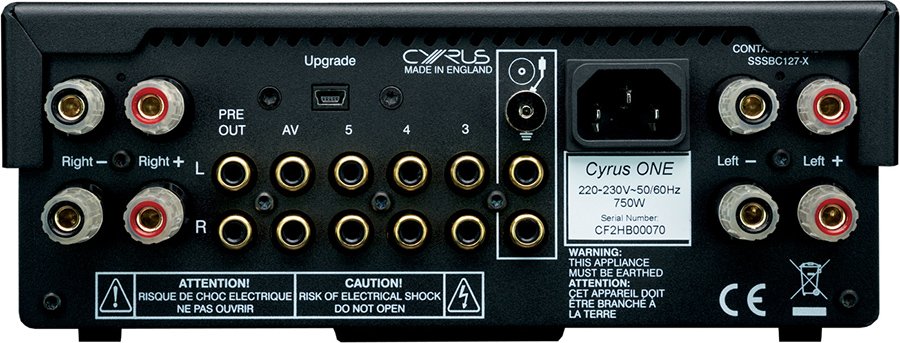
The front panel is made from a shiny black plastic and the outer case is made from sheet steel with a black finish. The steel is only just of a thickness that I would call adequate, which is a sign that pricing played a major part in the design decisions made by Cyrus. That doesn’t bother me personally because once installed I wouldn’t pay any more attention the thickness of the chassis provided it does what is intended of it, which it does.
Inside the amplifier we find the power amplifier section is rated as 100 watts per channel into a 6 Ohms impedance, using hybrid Class D topology which Cyrus are keeping quiet over what the “hybrid” part is. Cyrus have incorporated a speaker impedance detection (SID) circuit which does what it says on the tin – detects the impedance of the speakers connected to the amplifier and I shall mention “SID” again later in the review. At switch on, the amplifier performs a self test routine which activates the LEDs in sequence, first incrementing then decreasing, so the source LED set ends with the previous selection and the volume LEDs track all the way down to zero, although I would prefer the previous listener volume setting, although that is a minor niggle you learn to easily live with.
Cyrus provide a simple compact remote control which enables source selection, volume up/down and muting, balance control, AV direct and LED brightness adjustment, which is a useful feature if you are not enamoured by looking at bright LEDs. I didn’t find them at all intrusive at the factory default setting. The ONE can also be controlled by Cyrus’s app. 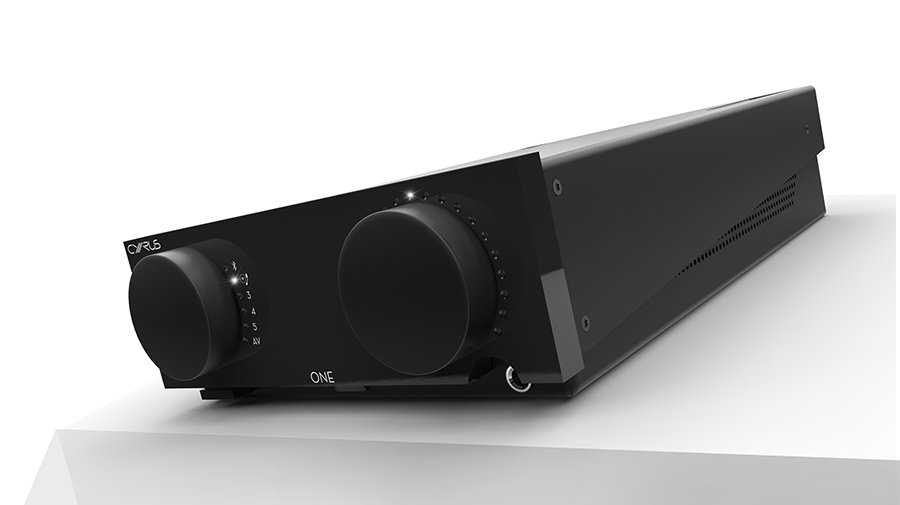
Specifications
Cyrus 3rd generation hybrid Class D amplifier – 2 x 100W (into 6 Ω at 0.1% THD+N)
Dimensions: (H X W X D) – 85 x 220 x 390mm
Weight – 5.6kg
Price at time of testing: £699.00 (999.00 Euros)
Sound Quality
During the early part of the evaluation I was a bit perturbed by a fairly loud ‘pop’ from the left hand speaker only at switch on, after the self test routine had completed. I got in touch with Cyrus who said the SID circuit was responsible and an upgrade to the latest firmware would cure this. Unplugged the Cyrus ONE from the rack, hauled it over to the PC and some digging in the cables drawer found the right USB lead and connected the two. Download a small file from the Cyrus website to your PC or MAC and within moments the firmware is updated. If a dummy like me can do it, anyone can, or your friendly Cyrus dealer should be able to help if you don’t have computer access. From a loud ‘pop’ down to a quiet brief buzz from the now upgraded firmware meant the SID circuitry goes about its business a bit more inconspicuously.
Onto the sound quality now and I was a tad afeared the Class D amplification in the ONE amplifier would produce an over lively or cold/clinical/bland kind of sound, but not so. I found it agile and fleet of foot, full bodied too and clean sounding in the mid frequencies. No peaks, no troughs, no rough edges, no glare, no harshness, no brightness, no overblown or anaemic bass, no holes at all within the audible spectrum. Should I be pleased or concerned by this? I was actually very pleased that the ONE isn’t using a “Class” of amplification that can cause some issues; it is always the design and implementation of any amplifier class that is the key.
Into my resident system it went then and it gave a good account of itself, by having excellent control of my speakers in the bass registers and not provoking any fizz from the tweeters which are only a whisker away from with using inferior amplification. Good result.
I then paired the ONE with various other speakers to get a handle on how SID (Speaker Impedance Detection) circuit works and delivers sonic benefits. First up was a pair of Roksan K2 TR-5 Series 2 speakers which I have on loan courtesy of Roksan. The TR-5’s have a healthy bass output and a sweet top end with its fine ribbon tweeter in my resident system and the ONE amplifier maintained those traits with the bass having better control and dynamics, overall sounding cleaner in the midband, losing none of the silky sweetness in the treble registers.
Next I tried a pair of Tannoy Revolution XT6 stand mount speakers fitted with the Tannoy dual concentric drivers. In my own system the bass was a bit on the woolly side with these speakers, but the ONE amplifier gave the XT6’s a dose of adrenaline it seems because they came to life and no small measure of vitality was added, making them a very pleasant listen.
Finally a pair of Audiovector QR1 speakers was hooked up, again endowed with a superb ribbon tweeter that paired really well into my resident system and equally at home being powered by the Cyrus ONE amplifier too. This was my favourite pairing with the ONE amplifier as it gave a stunning performance that you could listen to for many hours without fatigue or becoming jaded with the sound, as each CD had new windows into the music being added. If ever I get the urge to downgrade or cease reviewing (maybe a second system perhaps?) I might be tempted to seek out this pair to be my own as neither amplifier nor speaker outclassed each other.
London Grammar’s “If You Wait” CD went into the player and I pressed the play button. Track one is called “Hey Now” recorded with echo and ambience added which gives a faux ’empty cathedral’ echo type effect and that should sound vast, which it did, so sounded like it was many yards deep. Bass was full and rich, kick drum had a solid powerful punch to it, female vocals clear and vibrant, treble fast and clean too. I listened to the entire album from start to finish and try as I might I couldn’t find any real fault with what I was hearing. Time for something a bit more challenging then.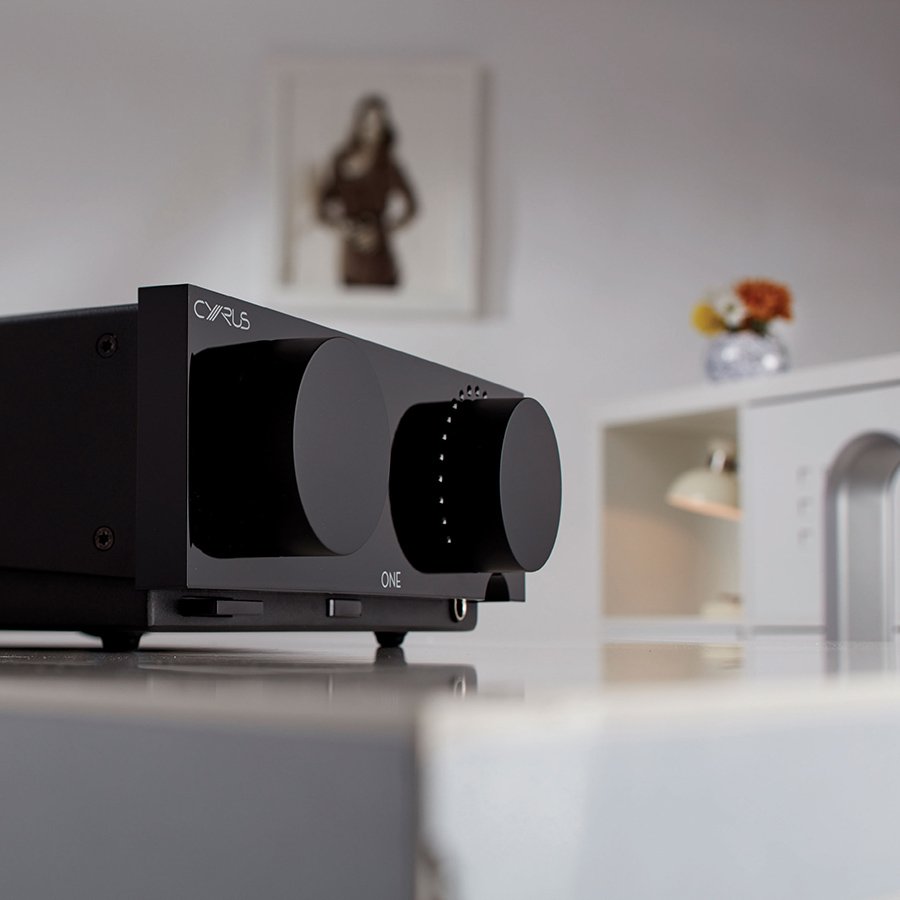
Next into the CD drawer was Porcupine Tree’s “Deadwing” album which to me either sounds sublime, or dreadful, with not much middle ground to stay safe on. Track one is the title track ‘Deadwing’ and gets pretty raucous and frenetic in places that easily wrong-foots many systems. At five minutes 40 seconds the pace changes to a much slower one and it’s a merciful relief at times. Then a minute or so later there is a long low bass guitar riff that must roll out of the speakers seamlessly and full of powerful energy, that I pay extra special attention to as a benchmark test.
Of course I had to let loose on the Cyrus ONE my reference recording to see where if any deficiencies in the ONE’s performances lay. Fink’s “Wheels Beneath My Feet” live album has enough benchmarks for me to spot instantly where timing errors are, bass power and heft is lacking, any treble resolution maladies, midband accuracy and a whole list of other benchmark tests that I subject any component to that is presented for review. Of course these are very much coupled to the price a component commands, where it sits in the market against any competitors and notwithstanding the claims made by the manufacturer, so there is a complex sliding scale involved here too and where I need to I will be critical on high price tag items and a lot more forgiving at the budget end of the scale. Nevertheless, there are specific criteria there for all to meet. One of these is the floor tom whacks the drummer metes out to the drum kit during the track “Sort of Revolution” which has to get the floor and walls thumping in my listening room. The Cyrus ONE has plenty of power and low down grunt for this task and to generally convey the driving bass and drum lines during the entire track, carried along by the audience clapping along. Imaging and soundstage were up to the mark if not to an exceptional level, with good instrument placement, good depth and height, the width only just outside of the speaker boundaries. It all has to flow in seamless harmony, in time, in tune, with no drop outs, smearing or clashing. I was though very impressed at how the Cyrus ONE managed to hold all of these in check in an insightful and unflappable way. It doesn’t have that final n-th degree of fine detail and resolution though and it is only when you directly compare it to other amplifiers which come with a much higher price tag that you would notice that, so on it’s own with no side-by-side comparisons you couldn’t tell otherwise, which given it’s modest price of £699.00 I have no right to belittle it’s fine abilities.
Conclusion
To sum up then, here we have an amplifier that has a set of competencies that you wouldn’t expect at this price level. Arguably, the remote control handset could be a more substantial affair (Although I believe other Cyrus amplifier remotes will work), a thicker gauge of steel in the casework and how much more would a set of good quality single run wired speaker terminals cost in reality? Cyrus have obviously looked at those costs already and cast their die in the design specification brief, so you either live with it or not as your own conscience dictates.
Aside from those minor gripes which have no impact on the way it sounds, I think Cyrus have done a good job of producing an amplifier that sailed through all of my review listening tests and emerged with it’s head held high. Sure, that final level of fine detail could be addressed, but there is always the fear that harshness could creep in via putting that right and I would sooner take the amplifier exactly as it is than the risk of adding some rough edges in there by trying to cure that. The SID circuit may or may not be contributing towards the amplifier’s ability to team up with a variety of speakers that sounded just a tad lacklustre when paired with other amplifiers, as in the Tannoy Revolution XT model I tried. If that is true, then that negates an awful lot of synergy fears for prospective buyers.
BUILD QUALITY: Adequate is the right word here. Nothing broke or fell off during the evaluation. The speaker binding posts could certainly be improved
SOUND QUALITY: Apart from a slight curtailing of detail at the extreme treble, it gave a full satisfying sound quality, free of harshness and fatigue. Easy to pair with most speakers via the SID circuit
VALUE FOR MONEY: Busting good value at this price level
Pros: Sound quality, compact size, purchase price. SID circuitry
Cons: Binding posts are the one blemish for me with this amplifier
Price: £699
Dominic Marsh
















































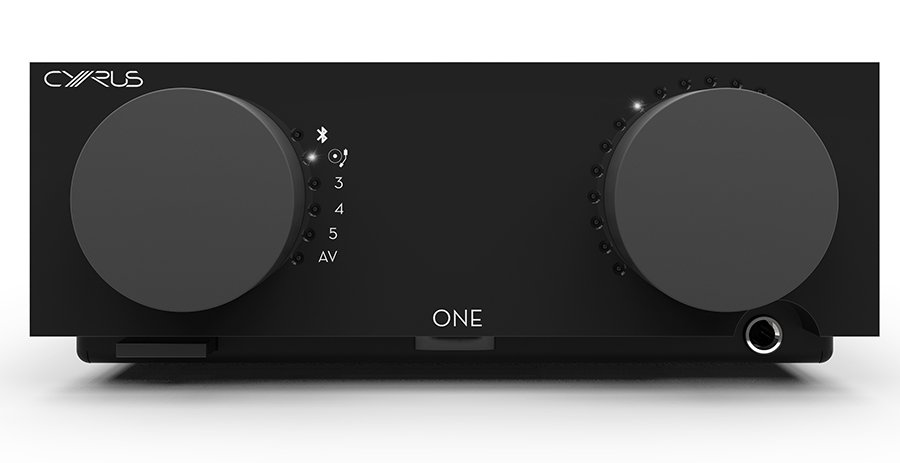

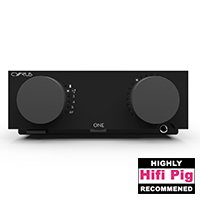
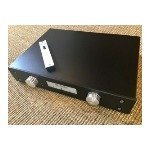


































































































































You must be logged in to leave a reply.